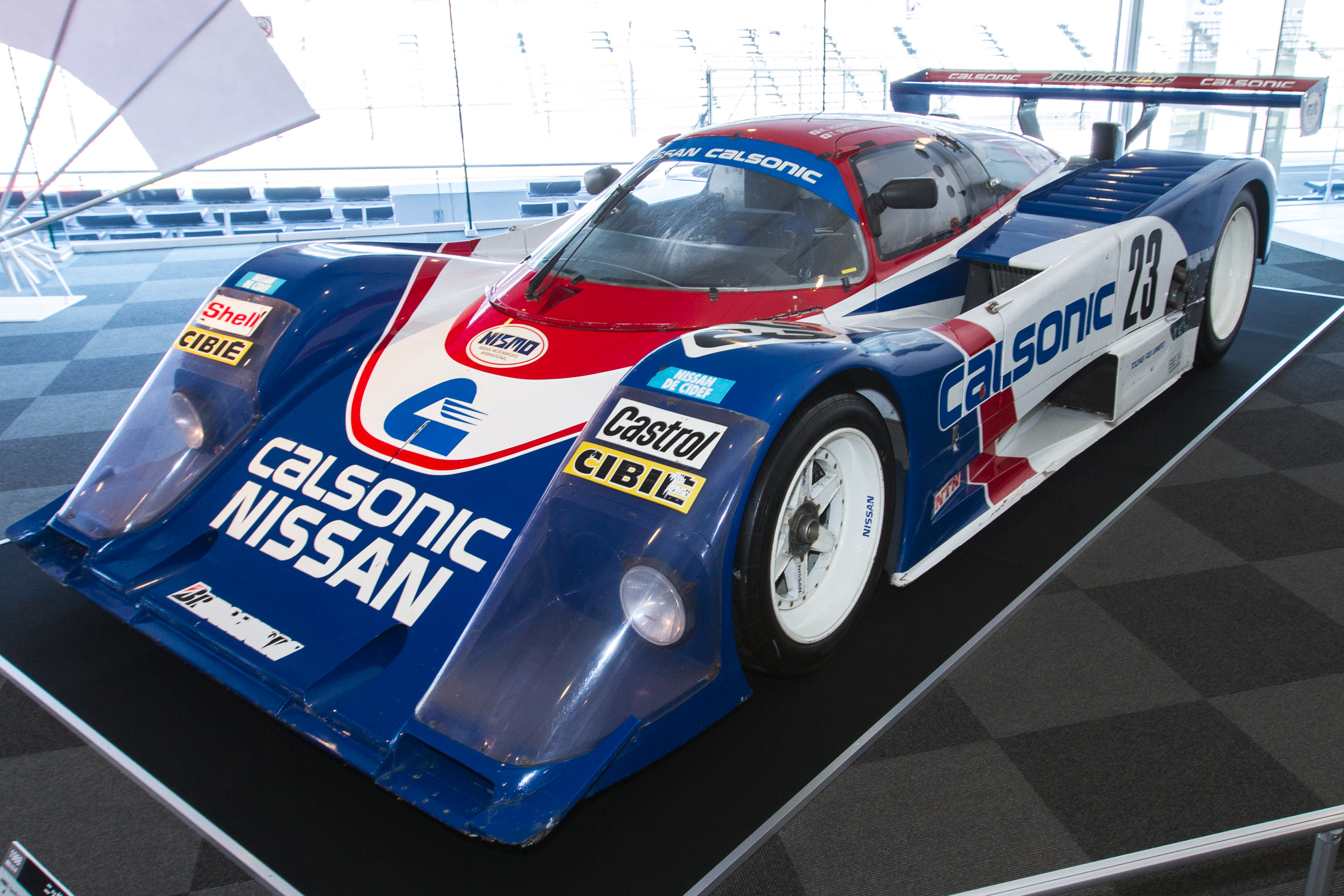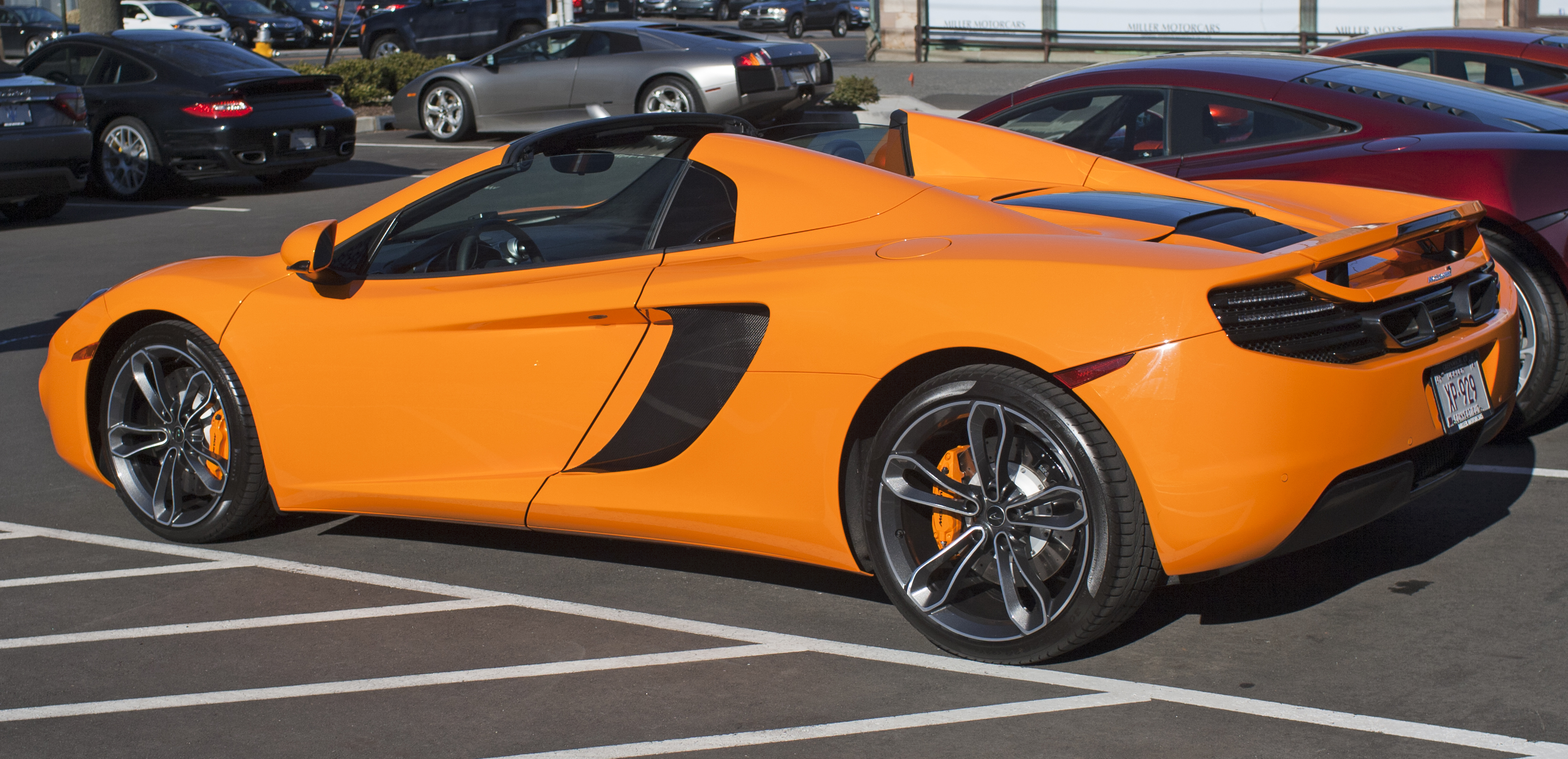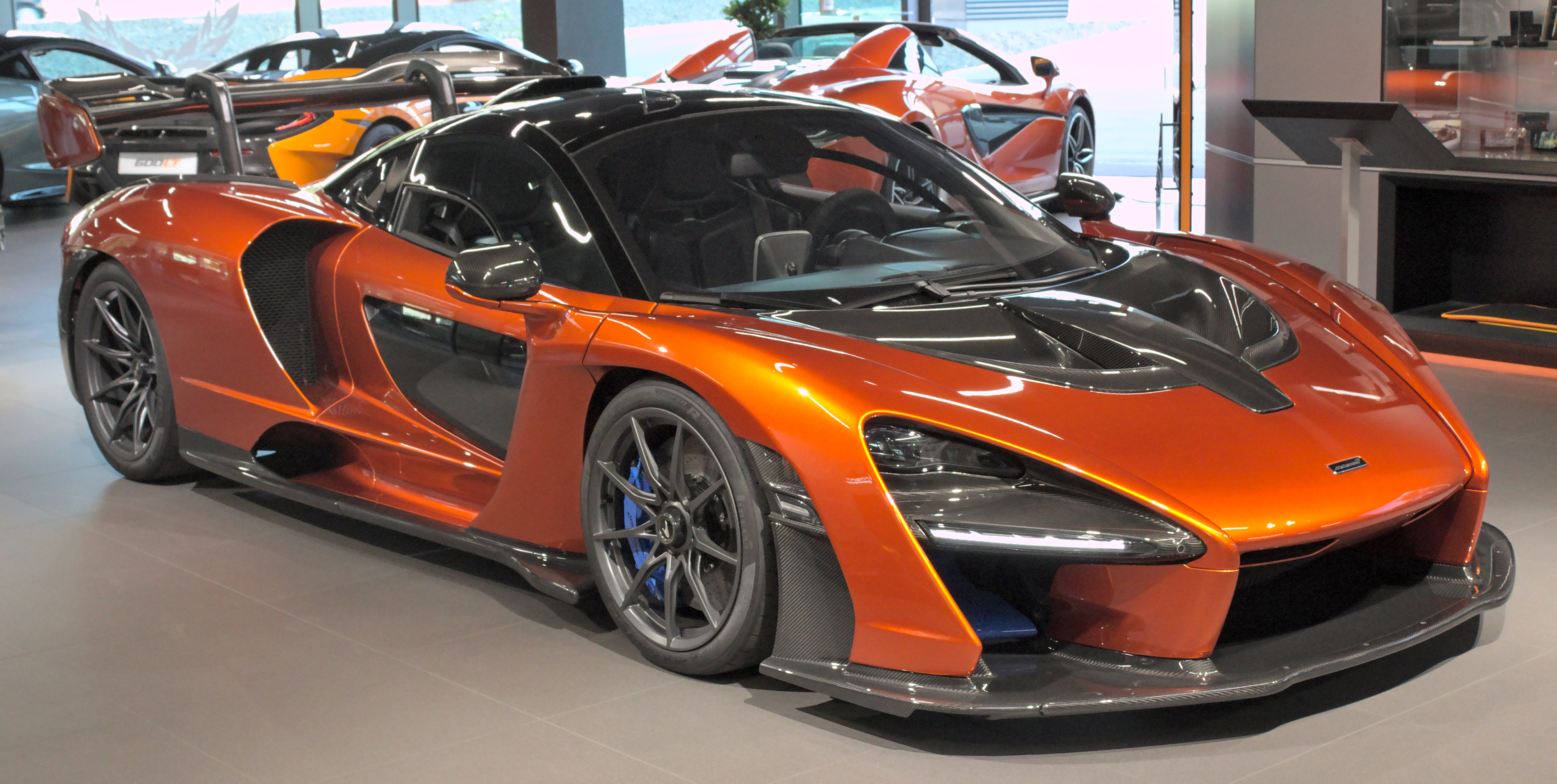|
Nissan VRH35 Engine
The Nissan VRH engine family consists of several racing engines built by Nissan Motor Company beginning in the late 1980s. All VRH engines are in a V8 configuration, with either natural aspiration or forced induction. Some VRH engines are loosely based on Nissan's production V8 engine blocks, including the VH and VK engines, while others were designed from the ground up for racing and share no components with production blocks. The name "VRH" comes from the engines' V configuration ("V"), their purpose as racing engines ("R"), and the fact that all of them have eight cylinders (with "H" being the eighth letter of the Latin alphabet). History In 1987, Nissan began work on an engine exclusively for race use; the result was the VEJ30 engine, developed by Yoshikazu Ishikawa. This engine was based on old technology, and was not a success. For 1988, the VEJ30 was improved by Yoshimasa Hayashi and renamed the VRH30. Changes included increasing the displacement to . This engine w ... [...More Info...] [...Related Items...] OR: [Wikipedia] [Google] [Baidu] |
Nissan
is a Japanese multinational Automotive industry, automobile manufacturer headquartered in Yokohama, Kanagawa, Japan. The company sells its vehicles under the ''Nissan'' and ''Infiniti'' brands, and formerly the ''Datsun'' brand, with in-house performance tuning products (including cars) under the Nismo and Autech brands. The company traces back to the beginnings of the 20th century, with the Nissan ''zaibatsu'' or called Nissan Group. Since 1999, Nissan has been part of the Renault–Nissan–Mitsubishi Alliance (Mitsubishi joining in 2016), a partnership between Nissan and Mitsubishi Motors of Japan, with Renault of France. , Renault holds a 15% voting stake in Nissan, while Nissan holds the same stake in Renault. Since October 2016, Nissan held a 34% controlling stake in Mitsubishi Motors. In November 2024, Nissan reduced its stake in Mitsubishi Motors from 34% to 24%. Nissan planned to merge with Honda Motor Company in 2026, after an announcement in December 2024. However by ... [...More Info...] [...Related Items...] OR: [Wikipedia] [Google] [Baidu] |
Nissan VH Engine
The VH series consists of engines built from 1989 to 2001 by the Nissan Motor Corporation. The design consists of a 90-degree V8 with an aluminium cylinder block that features a closed upper deck and a deep skirt. The cylinder heads are also aluminium with a DOHC 4 valves design and pentroof combustion chambers. The production blocks and production head castings were used successfully in various forms of racing including the IRL. VH45DE The VH45DE is a V8 developed by Nissan for use in the Infiniti Q45 sport luxury sedan (G50 platform) which was released in November 1989. The engine was also used in the Japanese market Nissan President limousine (JG50 platform) which debuted in late 1990. The VH45DE typically generates at 6000 rpm and at 4,000 rpm with a redline of 6900 rpm. Some of the pertinent features of the VH45DE are forged steel crankshaft, forged steel connecting rods, 6 Bolt main bearing caps with studs, full-length main bearing girdle, lightwe ... [...More Info...] [...Related Items...] OR: [Wikipedia] [Google] [Baidu] |
McLaren 12C
The McLaren MP4-12C, later rebranded as the McLaren 12C, is a sports car produced by the British carmaker McLaren Automotive. Manufactured between 2011 and 2014 and designed by Frank Stephenson, the MP4-12C was available as both a coupe and a Retractable hardtop, retractable hard-top convertible, the latter known as the "Spider". McLaren started developing the 12C in 2005. The company used prototypes from other carmakers as test mule, test vehicles for the upcoming project. The 12C marked McLaren's return to producing a production car since the McLaren F1, F1, which ceased production in 1998. The 12C debuted online as the MP4-12C in September 2009, and McLaren began mass production, series manufacturing the car in February 2011, at the company's facility in Woking, Surrey. The 12C has a carbon fibre composite chassis and a turbocharged V8 engine that generates a power output of and a torque output of . McLaren debuted the 12C Spider in July 2012. The production of the 12C ende ... [...More Info...] [...Related Items...] OR: [Wikipedia] [Google] [Baidu] |
McLaren M840T Engine
The McLaren M840T engine is a , 90-degree, twin-turbocharged, flat-plane V8 petrol engine, designed, developed and produced by McLaren, in partnership and collaboration with Ricardo, and introduced with their 720S sports car model, in 2017. It is an evolution of the M838T engine, introduced in 2011. Development McLaren bought the intellectual property rights to the Tom Walkinshaw Racing developed engine, itself based on the Nissan VRH engine architecture, which was designed for the IRL IndyCar Series but never raced. However, other than the bore and stroke, little of that engine remains in the M840T. Developed with help from Ricardo, the engine redlines at 8500 rpm, but 80% of the engine's torque is available as low as 2000 rpm. McLaren claims that the engine has the highest horsepower to emission ratio of any current production engine. M840T engine uses double MHI turbochargers which names TD05H-06*20HF1T-12T. Despite the name, these are not the same turbochargers wh ... [...More Info...] [...Related Items...] OR: [Wikipedia] [Google] [Baidu] |
McLaren M838T Engine
The McLaren M838T engine is a 90-degree twin-turbocharged flat-plane V8, designed and developed in collaboration with Ricardo. Development McLaren bought the rights to the Tom Walkinshaw Racing developed engine, itself based on the Nissan VRH engine architecture, which was designed for the IRL Indycar championship but never raced. However, other than the bore, little of that engine remains in the M838T. In only 18 months, Ricardo went from a modified Nissan engine design to a running prototype. The Ricardo-developed engine redlines at 8500 rpm, but 80% of the engine's torque is available as low as 2000 rpm. McLaren claims that the engine has the highest horsepower to emission ratio of any current production engine. The engine is built at Ricardo's engine assembly facility in Shoreham-by-Sea, West Sussex. The turbochargers are supplied by Mitsubishi Heavy Industries (MHI), and are different units from those used in Mitsubishi Lancer Evolutions. Applications The eng ... [...More Info...] [...Related Items...] OR: [Wikipedia] [Google] [Baidu] |
McLaren Automotive
McLaren Automotive ( ; formerly known as McLaren Cars) is a British luxury Automotive industry, automotive Manufacturing, manufacturer based at the McLaren Technology Centre in Woking, England. The main products of the company are sports cars, which are produced in-house in designated production facilities. As of March 2025, McLaren Automotive is wholly owned by CYVN Holdings LLC, owned by the government of Abu Dhabi. History Origin and founder McLaren Automotive replaced McLaren Cars in 2010. McLaren Cars had been founded in 1985 and released the McLaren F1 in 1992. Between 1994 and 2010, McLaren Cars was registered as a 'dormant company', before the founding of McLaren Automotive in 2010. The new company was originally separate from the existing McLaren companies to enable investment in the new venture, but was brought together in July 2017 after Ron Dennis sold his shares in McLaren Automotive and McLaren Group. McLaren's Formula One founder Bruce McLaren was born in Auckla ... [...More Info...] [...Related Items...] OR: [Wikipedia] [Google] [Baidu] |
Did Not Finish
In racing, did not finish (DNF) denotes a result of a participant who does not finish a given race, either because of a mechanical failure, injury, or involvement in an accident. This may also be used in cases where the competitor has hit the time limit for the race, especially in speedcubing. The term is used in: * Automotive racing such as Formula One; NASCAR; IndyCar; off-road racing, including buggy, trucks, kart, and UTVs, both desert and short-track *Motocross and quad racing, both desert and short-track *Horse racing *Competitive cycling *Competitive track and distance running *Competitive snow skiing and snowboarding *Competitive swimming *Speedcubing Race participants try to avoid receiving a DNF, as some associate it with poor driving. Scholarly research Decathlon competitors Numerous studies have sought to figure out why DNF rates vary greatly, even within the same competitive discipline. For example, in track and field, Edouard found a 22% overall DNF rate among ... [...More Info...] [...Related Items...] OR: [Wikipedia] [Google] [Baidu] |
1998 24 Hours Of Le Mans
The 1998 24 Hours of Le Mans was the 66th Grand Prix of Endurance, and took place on 6 and 7 June 1998. Schedule Events for the 24 Hours of Le Mans began on 2 May with technical inspections, before initial pre-qualifying on 3 May. The race week began on Monday 1 June with renewed technical inspections. Entries 1998 saw a significant increase in manufacturer involvement. Porsche and Mercedes-Benz remained, with upgraded cars in both GT1 and LMP. Toyota sent three of their new, extremely fast GT-One racing cars, while BMW, in association with WilliamsF1, launched the new BMW V12 LM. Nissan sent 4 of their new R390 GT1s. The United States was also represented properly with a two car team from Panoz, with Ford powered Esperante GTR-1s, and factory-backed Chrysler Viper GTS-R in the GT2 class entered by Oreca. Automatic invitations Automatic entry to the 1998 24 Hours of Le Mans was granted to teams that had performed well in the previous year's 24 Hours of Le Mans, as ... [...More Info...] [...Related Items...] OR: [Wikipedia] [Google] [Baidu] |
Courage Compétition
Courage Compétition was a racing team and chassis constructor company now owned by Oreca, based in Le Mans, France, near the Circuit de la Sarthe. It was founded by Yves Courage, a French race driver who ran hillclimbs before founding the company. Following the purchase of Courage by Oreca in 2007, Yves Courage has refounded the company as Courage Technology in 2010, attempting to develop electric racing cars. History Yves Courage Yves Courage (born on April 27, 1948) began his racing career in 1972, racing in various hillclimbs throughout the 1970s. By 1980, he had won over 80 hillclimb races, including the Mont-Dore. However, in 1977, Yves Courage moved to sports car racing, participating in his first 24 Hours of Le Mans. In 1981, along with Jean-Philippe Grand, Courage's Lola-BMW managed to finish the race and take victory in the under 2-liter sport class. With this success, Courage decided to found his own company and began building prototype chassis with which he c ... [...More Info...] [...Related Items...] OR: [Wikipedia] [Google] [Baidu] |
Nissan R390 GT1 (1998) Front-left 2012 Nissan Global Headquarters Gallery
The Nissan R390 GT1 was a racing car built in Atsugi, Japan. It was designed primarily to gain a suitable racing entry in the 24 Hours of Le Mans in 1997 and 1998. It was built to race under the grand touring style rules, requiring a homologated road version to be built. Therefore, the R390 was built originally as road car, then a racing version of the car was developed afterwards. Only one R390 road car was ever built and is stored at Nissan's Zama facility, although one of the race cars was later modified for road use. The road car was claimed to be capable of attaining a top speed of . However, this claim has never been proven. History After returning to sports car racing in 1995, Nismo (Nissan motorsport) had some measure of success with their Skyline GT-R LM which had competed in the GT1 class. However, these cars were quickly outpaced by the influx of new manufacturers who were using loopholes in the GT regulations to build racing cars that bore little resemblance to their ... [...More Info...] [...Related Items...] OR: [Wikipedia] [Google] [Baidu] |
Nissan R89C
The Nissan R89C was a Group C sports prototype developed by Lola Cars for Nissan. Development Replacing the original March built series of prototypes that Nissan had used, the R89C was part of Nissan's increased involvement in the project. Developed in conjunction with the Lola firm, the R89C featured a Kevlar and carbon-fibre based monocoque chassis (named ''T89/10'' internally at Lola). Nissan's new twin-turbo VRH35 3.5L V8 DOHC engine was mounted in a stressed installation for better chassis rigidity and produced up to 950bhp. Four chassis were built by Lola, two being entered in the 1989 World Sportscar Championship season by Nissan Motorsport Europe (chassis #01 and #04) and two in the All Japan Sports Prototype Championship by Nissan Motorsport Japan (chassis #02 and #03). Racing history In the 1989 World Sportscar Championship season, Nissan struggled to solve not only reliability problems, but also to find pace from the new chassis and engine. As a result, the R89C w ... [...More Info...] [...Related Items...] OR: [Wikipedia] [Google] [Baidu] |
Engine Displacement
Engine displacement is the measure of the cylinder volume swept by all of the pistons of a piston engine, excluding the combustion chambers. It is commonly used as an expression of an engine's size, and by extension as an indicator of the power (through mean effective pressure and rotational speed) an engine might be capable of producing and the amount of fuel it should be expected to consume. For this reason displacement is one of the measures often used in advertising, as well as regulating, motor vehicles. It is usually expressed using the metric units of cubic centimetres (cc or cm3, equivalent to millilitres) or litres (l or L), orparticularly in the United States cubic inches (CID, cu in, or in3). Definition The overall displacement for a typical reciprocating piston engine is calculated by multiplying together three values; the distance travelled by the piston (the stroke length), the circular area of the cylinder, and the number of cylinders in the whole e ... [...More Info...] [...Related Items...] OR: [Wikipedia] [Google] [Baidu] |





